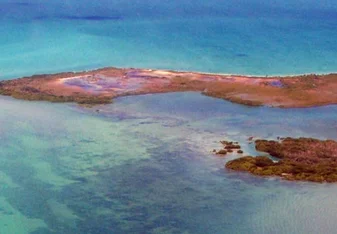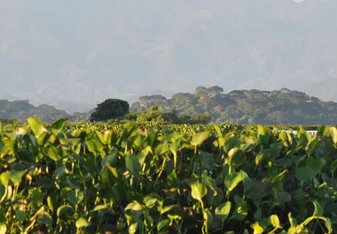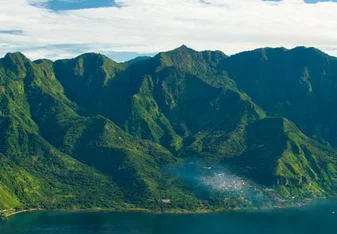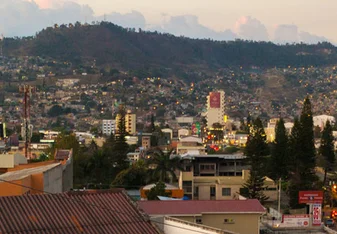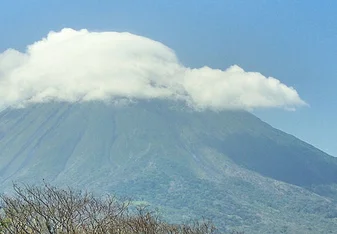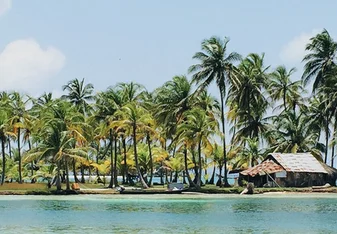Study Abroad Programs in Central America
Study Abroad Programs in Central America
Pagination
About
If embarking on tropical excursions, exploring natural wonders, and experiencing a rich and interesting culture are what you’re looking for in a study abroad program, then look no further than the beautiful isthmus of Central America. For years, this small, North American subcontinent has been overlooked as a destination for tourists and students, but nowadays, it is quickly emerging as a new hotspot for travel.
Its many volcanoes, mountains, and rain forests, its miles of coastline, and its incredible historical landmarks make Central America a wonderful place for students to merge education with adventure. Every day there are more opportunities available for those looking to expand their horizons and immerse themselves in a culture totally different from their own.
Program Types
You'll have many different options when it comes to studying abroad in Central America. Whether you're constrained by time or have a specific area you'd like to study, you'll find a program you're sure to love!
Spanish Immersion Programs
If you really want to learn the language and the culture in Central America, consider a Spanish immersion program. You'll have better results in your learning, but it will definitely be more difficult. When there aren't many English speakers around, you'll have to start thinking in Spanish. Plus, you can go where ever you like -- these types of programs are all over Central America.
That said, Costa Rica is a popular destination for beginner Spanish speakers.
Ecology / Conservation Programs
Conservation and ecology programs are fantastic for students who want the opportunity to learn about the efects of globalization while making a difference. Students can help sustain environments damaged by the demands of the tourism industry and other negative impacts. If you have an interest in biodiversity and studying conservation or ecology, Central America is the perfect place to learn.
Direct Enrollment
Direct enrollment means enrolling at a Central American university like you would your home university. This will make it easier for you to gain credits toward graduating, and you can earn scholarships to help you cover the cost of tuition. Direct enrollment will take a little more planning, but it tends to be cheaper and you'll have much more control over your study abroad experience in Central America.
Service Learning Programs
Want to volunteer while learning at the same time? Then consider a service learning program. Your time will be divided between community service projects and time in the classroom. From community development to education, there's a wide variety of fields with service learning projects. Some may require a basic level of Spanish, but not all.
Summer Programs
If you don't have time for a program during the school year, don't worry! You can participate in a summer program. Often, summer programs may involve a combination of educational travel and faculty-led sessions or intensive courses at a local university or institute. Whether you focus on learning Spanish or take a few credits at one of the universities, you're sure to have a fulfilling summer.
Where to Go
Regions
Central America is the narrow strip of land that bridges the gap between the continents of North and South America. Most Central American countries boast warm, tropical climates abound with everything from mountains and volcanoes to oceans and rivers. It is home to some of the most diverse ecosystems in the world, housing more than 20,000 different species of plants and animals and accounting for more than 7% of the world’s biodiversity. In fact, most of Central America is part of the Mesoamerican Biodiversity Hotspot, which spans from central Mexico down to the Panama Canal.
Major Universities in Central America
It hasn’t been until recently that universities in Central American have been getting much notice. Many of these nations have struggled fiercely with poverty and insufficient access to education over the years, and many still continue to today. But as the economic and political situations of Central America have stabilized, so has the education system. Both the Universidad de Costa Rica and Universidad Nacional Costa Rica are popular and well-regarded universities. This is due, in part, to the booming tourist industry in Costa Rica and an increase in skilled labor positions.
Many foreign universities in the United States and Europe have begun offering school-sanctioned study abroad programs with universities in Central America. Check with your universities international studies or study abroad department to get more information about the available programs at your school.
Central America is an exciting place to study abroad. It offers students an opportunity to experience a fascinating new culture and surround themselves with breathtaking sights, all while enriching their academic studies. For the adventurous spirit, Central America is the ideal study abroad destination. With no lack of natural wonders and ancient ruins abound, students can embark on a journey like no other.
Planning Your Trip
What to Pack
When packing for your trip, make sure you're ready for Central America's climate. Rain jackets and warm layers are a must for those studying in higher elevations, but you'll also want to bring bugspray, sunscreen, and a bathing suit. For more details on what to bring, read the Ultimate Study Abroad Packing Guide.
Languages
The Spanish colonized much of Central America during their conquest in the 16th century. So it comes as no surprise that the predominant language spoken in Central America is Spanish. In fact, 6 out of 7 countries claim it as their official language. The exception to this is Belize, which was eventually colonized by the British and where the official language is English. You can still expect to hear Spanish in Belize, as 46% of the population speaks it as their first language. Also expect to hear bits of Kriol, an English-based Creole language with influences from various African languages, the native Miskito language, and Spanish.
Central America has a rich history of indigenous culture, as well. Dating back to the early Mayans, numerous indigenous languages have come out of this region, many of which are still spoken there today.
If you plan to study abroad in Central America, it is wise to brush up on your Spanish before your trip and/or enroll in Spanish classes once you arrive. Spanish classes in most Central American countries can be found at very reasonable prices and are well worth the time and money.
Culture and Customs in Central America
Although Central America is a technically a subcontinent of North America, its culture more closely echoes that of South America. The unique mix of European, indigenous and Afro-Caribbean traditions reflect both its native and colonial roots. Of course, the culture of all Central American countries is not exactly the same, but they do have many similarities.
Cultural customs are heavily based on the heritage of the Maya and other pre-Columbian civilizations, as well as the Spanish colonial era. Customs are often centered on religious or spiritual holidays. Central American countries are predominantly Catholic, but frequently blend aspects of Mayan and indigenous religions. It is not uncommon to see Catholic saints and Mayan gods next to one another.
In general, Central Americans are very warm and welcoming people, even upon meeting someone new. When conversing, they stand close to one another and take great interest in the family and personal life of the person their talking to. Even in a professional setting, personal conversation often takes precedent over business.
The food is similar to that of other Latin American countries. Rice, beans, and tortillas play a large role in the Central American diet. They also utilize the incredible diversity of fruits, vegetables and roots that grow in this tropical region. Typically, breakfast and lunch are the largest meals of the day, with dinner often being a light snack. In Honduras, Guatemala and El Salvador, foods have been largely influenced by their Mayan and indigenous roots.
Costs
Cost of Living
Compared to the more affluent regions of the world, the cost of living in Central American nations is relatively low. Depending on which country you are looking to study in, one could expect to easily spend less than $900 USD per month (not including educational costs). Of course, this figure can vary based on how much you intend to travel or go out for meals or entertainment. If need be, it can be quite easy to live on a tight budget in Central America.
Belize is perhaps the most expensive Central American country to live in, where you can end up spending over $1,000 USD per month. The country with the lowest cost of living would be Nicaragua, where one could live quite well on around $600 USD per month. The other five nations of Central America fall somewhere in between. Always keep in mind that these figures depend heavily on your lifestyle.
Scholarships for Study in Central America
While studying in Central America may be more affordable than in many other regions of the world, studying abroad can still be expensive. Fortunately there are a multitude of scholarships available to help alleviate the financial pressure of studying overseas.
- The Benjamin A. Gilman Scholarship is a great source of funding for international studies.
- Rotary is a large organization that offers scholarships for studying in various countries, including those in Central America.
- Similarly, National Security Education Program/Boren Scholarships site is another popular scholarship option.
- More Study Abroad Grants and Scholarships
















